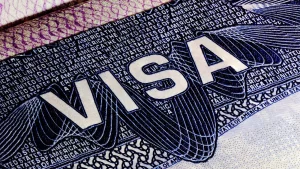What is an L-1 Visa?
An L-1 visa facilitates intracompany transferees from a foreign office to come to the U.S. to work in an affiliated or related U.S. office, catering to roles either as an executive/manager (L-1A) or as a professional employee with specialized knowledge (L-1B). This visa is instrumental for companies looking to expand into the American L1 visa market by establishing a new subsidiary or branch office in the U.S., even if the foreign company does not yet have an affiliated U.S. office.
How Can I Qualify for an L-1 Visa?
To be eligible for an L-1 visa, the petitioning U.S. employer must demonstrate a qualifying relationship with a foreign company (parent, subsidiary, branch, or affiliate) and must be engaged in active business in the U.S. throughout the L-1 visa’s duration. The business needs to be operational, regularly providing goods and/or services rather than merely existing as an office space. For L-1A and L-1B visas, the employee must have been employed by the foreign office for at least one year within the last three years in a role that is managerial/executive or involves specialized knowledge related to the company’s operations. Additionally, to open a new office in the U.S. under L-1A visa requirements, there must be proof of secured physical office space and that the new office will support the role of the transferee.

The L1 visa process, including understanding the L1 visa eligibility, L1 visa qualifications, and L1 visa criteria, is crucial for successfully navigating the application process. L1 visa types, such as L1A and L1B, have distinct L1 visa rules that applicants must adhere to, including L1 visa requirements USA. Knowing how to get an L1 visa, including the L1 visa duration and specifics of the L1A visa process or L1A visa type, is essential for professionals seeking to leverage this visa L1 USA pathway for their career and business growth.
How Do I Apply for an L-1 Visa?
The application process for an L-1 visa involves the U.S. employer submitting a Form I-129 visa petition to USCIS, evidencing the qualifying relationship between the U.S. entity and its foreign counterpart, alongside the L-1 beneficiary’s role as an executive/manager (L-1A) or as an employee endowed with specialized knowledge (L-1B). Particularly for smaller entities or those venturing to establish a new office stateside, the requirement for substantial documentation, including a detailed business plan, is paramount to substantiate the employee’s qualifying position. For larger organizations intending to facilitate the transfer of numerous employees from their foreign offices, the “blanket L-1 visa petitions” avenue permits the establishment of the intracompany relationship upfront. Once a blanket L-1 approval is granted, the employer is enabled to directly bring intracompany transferees to the U.S. without individual USCIS petition filings for each employee, streamlining the process significantly.
How Long Can I Stay in the U.S. Under an L-1 Visa?
An initial L-1 visa grants up to three years of residency within the U.S. per application, with a distinction for those inaugurating a new office, where the period is capped at one year. This restriction allows USCIS to verify the operational adherence of the new office to the submitted business strategy. Following the initial visa term, L-1 status may be extended in two-year intervals, subject to a maximum tenure of seven years for L-1A visa holders and five years for L-1B visa holders. Upon reaching the stipulated maximum stay, individuals must spend at least one year employed with the associated foreign enterprise outside the U.S. before re-eligibility for L-1 status.

This comprehensive approach, delineating the l1 visa procedure, l1 visa America potential, and American l1 visa requirements, alongside l1 visa eligibility and l1 visa rules, underscores the pathway’s versatility for global companies in enhancing their U.S. operational presence while aligning with l1 visa requirements USA.
Can I Change Jobs or Work for Multiple Employers?
All L-1 visas are specific to the employer who petitioned for your L-1 visa in America, meaning you are authorized to work only for that petitioner. If you’re considering switching jobs, unless your new role is with another related U.S. office of the foreign company, you will need to obtain a different work visa, such as an H-1B, following the L-1 visa procedure and adhering to L-1 visa regulations. The L-1 visa eligibility criteria differ based on the new company and the role offered, marking a significant difference between L1 and H-1B visas. Though an L-1 visa transfer to an H-1B visa has a numerical cap that may affect your start date, you may also explore employment-based permanent residency while on an L-1 visa, thanks to its “dual intent” nature, which is a unique aspect of L-1 visa criteria allowing for a green card application without affecting your L-1 visa status.
What If I Want to Quit or Get Terminated From My Job?
If you resign or are terminated from your position before the expiration of your L-1 visa duration, you are granted a grace period of up to 60 days or may remain until the end of your L-1 validity period, whichever is shorter. This grace period is a regulation under the American L1 visa requirements, during which you may seek new employment, change your visa status, or prepare to leave the U.S. However, L-1 visa rules state you are not permitted to work during this period.
Can I Bring My Family Members?

Your spouse and children under 21 can apply for an L-2 visa as dependents under the L1 visa USA framework. L-2 visa holders, under L1 visa requirements USA, can legally work in the U.S. once they obtain an Employment Authorization Document (EAD card) from USCIS. L1A visa and L1B visa regulations ensure that all L-2 visa holders also have the opportunity to engage in full or part-time study in the U.S. without needing a separate F-1 student visa, highlighting the flexibility of the L1 visa America in supporting the family members of L-1 visa holders.
